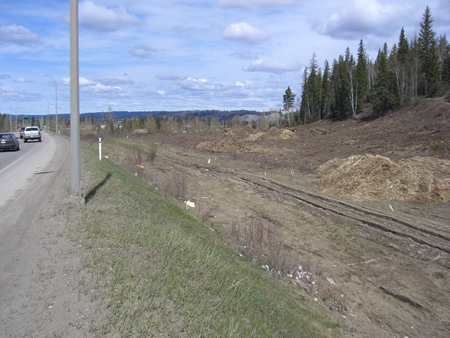Twinning Project Moving Ground
By 250 News
Saturday, May 05, 2007 04:55 AM

In just 10 days, crews have made major progress in preparing the south approach to what will be the twinned Simon Fraser Bridge.
Construction to the bridge approaches will begin July 1 and the design of the bridge is scheduled to be completed by the end of July.
A contract for the bridge construction will be tendered once the design is completed and the project is expected to be finished in spring 2009.
The bridge project had to be broken down to two parts, a design, then a build contract as the initial bids for a combined design/build came in more than $15 million dollars over the budgeted $32.5 million.
Previous Story - Next Story
Return to Home








